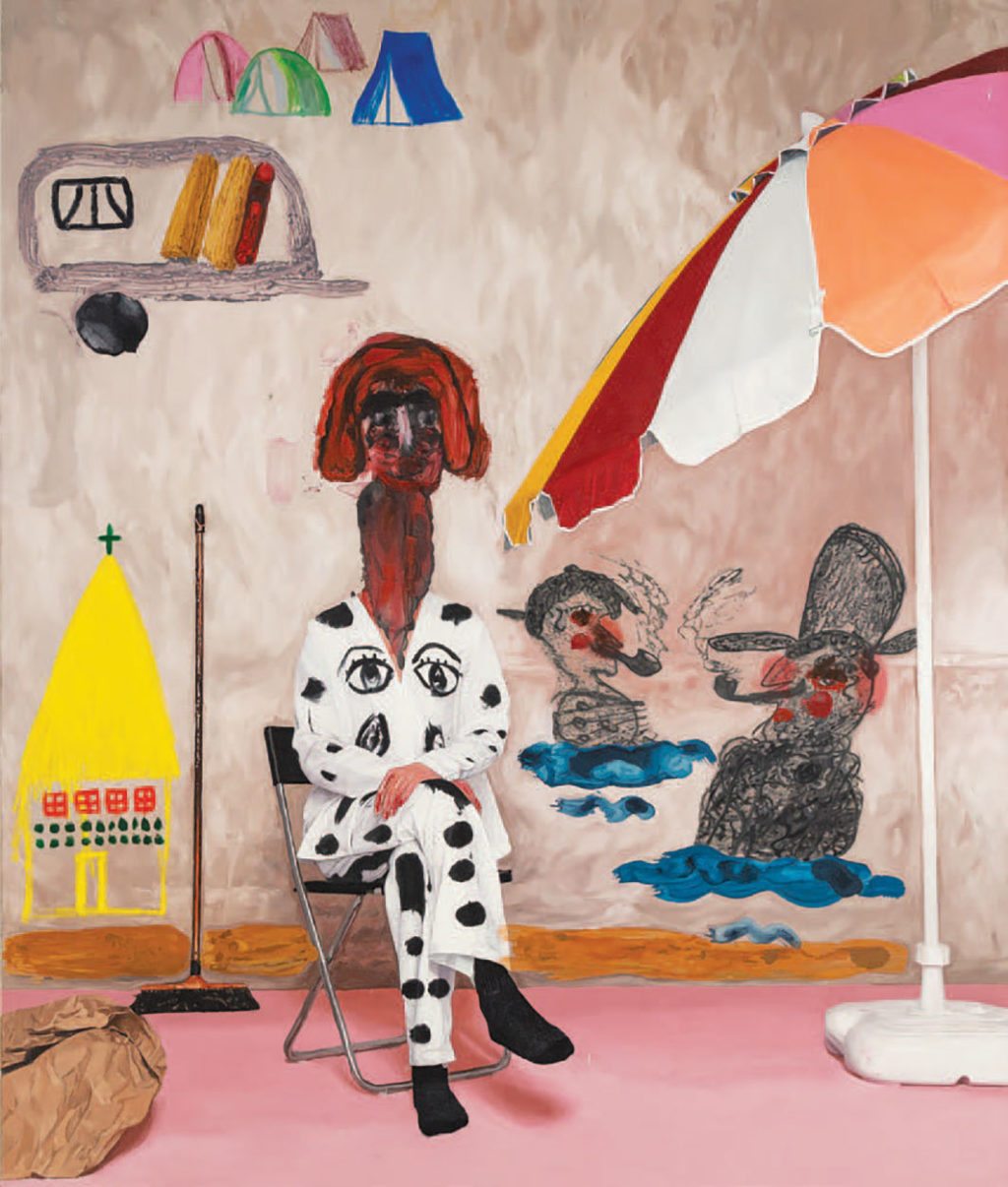Jannis Varelas
Jannis Varelas - Benaki Museum - Review
December 1, 2019–December 31, 2019Artforum
We are pleased to share the review of Jannis Varelas exhibition Anima I at the Benaki Museum in Athens in the December issue of Artforum, written by Klea Charitou.
Jannis Varelas
BENAKI MUSEUM
The anima, according to Carl Jung, is the manifestation of the female archetype in the male. This gender-bending concept lent an apt title to Jannis Varelas’s solo show “Anima I,” with its zeitgeist-laden examination of personal identity, gender, and sexuality. In ancient Greece, such themes carried different resonances—we think of the sexual superfluity of Pan, the universal acceptance of homosexuality, or the beneficial wisdom of the transgender soothsayer Tiresias. Varelas initiated us into a similar realm, one of prodigious imagination and joyful curiosity in psychohistory.
A series of hypnotic, Felliniesque black-and-white videos, shown on monitors stacked within a metallic grid, introduced the subjects of the show. The characters pose in the artist’s studio: A bearded Prospero with a big belly changes into Lycra tights and cape; a sultry Aphrodite lies topless on a fake Mediterranean beach; a mischievous Prometheus zips into a furry teddy-bear costume. These semimythic archetypes also populated the figurative paintings lining the gallery walls, which portray the models in oils, pastels, acrylic ink, gesso, and charcoal. Within this kaleidoscope of sexual and gender tropes, Varelas gives free reign to the imagination. The color of flesh varies from pink pastel to jet black to the vivid bloodred tones of Louisa (all works cited, 2019). As our eyes surveyed each figure’s progressive dematerialization, the constraints of rationality, too, seemed to loosen. Yet in their abundant vitality, certain forms retain an obstinate hyperrealism. Others, such as Mother of Fools, possess a patent wit and energy that projected a consciousness of their own.
A sculpture cast in bronze, Female Figure, sat as an island-like totem, a magus-oracle rendered with a viridian-green and reddish-copper patina around her nose and mouth. In a mock tribute called Noses, Varelas arranged a collection of votive rocks in the shape of noses: an iteration, perhaps, of the inescapable phallus as a comic taboo. He juxtaposed such objects with others drawn from the collection of the Benaki Museum for their folkloric resonances. Ceramic jars depicted weird figures participating in a ritualistic ceremony, while a clay sculpture of a demonic cat offered a startling reference to Egyptian totemism, a reminder of Claude Lévi-Strauss’s observation that “culture is thought of as a projection or reflection of nature.” The repetition of color and image registered continually. We recognized the delicate aquamarine of a vase repeated on a nearby canvas, just as the image of a cat’s head recurred as an enlarged motif in Untitled. Rescuing neglected artistic objects from storage, Varelas underscored the apparent continuity of human creativity.
The show was most striking in its evocation of collectivity rather than division, as well for its humanist touch, which balanced the anomie and despair in certain representations with a freedom of line, its adroit technical execution, and a patient and painstaking layering of paint. The deftness with color was reminiscent of the energetic gesture of Jean-Michel Basquiat, the pseudo-expressionism of Richard Prince’s recent paintings, and the vivid frontality of the Greek folk modernist Theofilos. We traced the line of the artist’s intention and recognized the paintings’ transformative power to interrogate our plausibility as much as their own, just as the spectator projected her or his own feelings into their raw yet spectral luminosity.
This is the work of an artist slightly outside his time. The portraits are forerunners, perhaps, of a return to a mythic ideal, exhibiting a yearning for the essential idea of the human in a world beset by technology. If we are slowly morphing into beings wholly dependent on glimmering screens, then their minatory signal provides an antidote.
— Klea Charitou
